Posthistorical Traditions in Art Design and Architecture in 1950s Japan
The story of 1950s art begins at the cease of the Second Globe War, because it was such a rupture to the trunk of the world, that the mail service-war art beginnings extend from mid 1940s to the adjacent decade. Slowly, as the world start recovering from the war trauma, new art movements used to develop worldwide. Major influences on the 1950s art were made by 1920s avant-garde movements, modernism, surrealism and abstract painting.
There are only few art styles connected even throughout the period of the war, and those were withheld past individual practices of influential artists from pre-state of war era such as Pablo Picasso, Salvador Dali, Max Ernst, Marcel Duchamp. For many artists, World Wars of 20th century brought the migration, and pregnant authors of 1950s decade were escaping Nazism in Europe past settling in the United States, which made New York the world'southward upper-case letter of art.
Check out more artworks from the 1950s available on our Market!
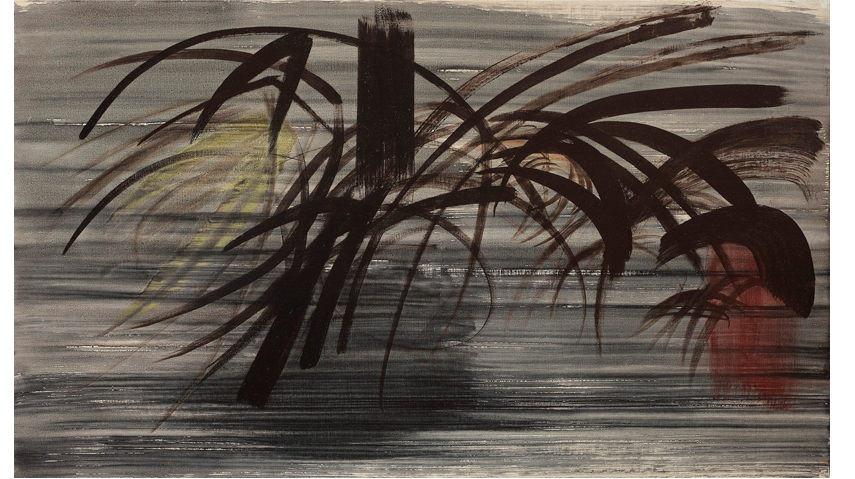
Cultural Panorama of 1950s Art
While the world was recovering from the state of war, two opponents derived from the ambivalent Allies of WW2 – Eastern, composed of the Soviet Wedlock and its satellite states, and Western bloc United States, its NATO allies and others. Basically world was separated between the supporters of one or another competitive unions. A big distinction was in their concepts of prosperity and politics, since Eastern bloc continued implementingrevolutionary propaganda forming communist regimes in Eastern Europe and Asia, theWestern bloc reached the state of developed capitalism, insisting on free market, commercial pattern, popularprint and ad. In 1950s, Soviet Matrimony and U.s.a. entered the nuclear and space race, the decolonization of the Third Earth countries was blooming, and the Keen Two competed for ideological predominance in those newly formed countries.
Every bit the civilization is a mighty tool for imprinting political ideology and/or economic agenda, the 1950s art was ane of the battlefields for the ultimate and long-lasting victory of communism or capitalism every bit the proposals for the New Globe Order. From ane mitt, Soviet Union and other communist regimes of the E showed lack of agreement for the fine art practices of Modernism, interpreting not-representative forms of art as incomprehensible for the proletariat, while United States' government through funding and arrangement directly supported rise of abstruse art to bear witness progressive and liberating grapheme of capitalist social club. In forthcoming years, it turned out that both of them were wrong, as the developed movements in the 1960s and 1970s heavily criticized the 1950s art globe.

Abstract Expressionism every bit Synonym for 1950s Art
As circuitous art movement in belatedly 1940s, abstruse expressionism was logical continuation of the anti-figurative aesthetic of the European abstraction and Modernist styles. During and after the war, U.s.a. and especially New York became the gathering identify of European artists, dealers and collectors escaping Nazi regimes. At the fourth dimension, New York hosted Yves Tanguy, Max Ernst, Peggy Guggenheim, Marcel Duchamp, André Masson, André Breton, Marc Chagall and Piet Mondrian and became art metropolis. Thus, American Abstract expressionism brought together influences of Surrealism, Cubism, Fauvism, and early Modernismbesides equally notable Bauhaus influences. Fifty-fifty though Abstruse Expressionism movement was mainstream, it could be roughly divided betwixt 2 major painting sub genres – Action Painting and Colour Field Painting.
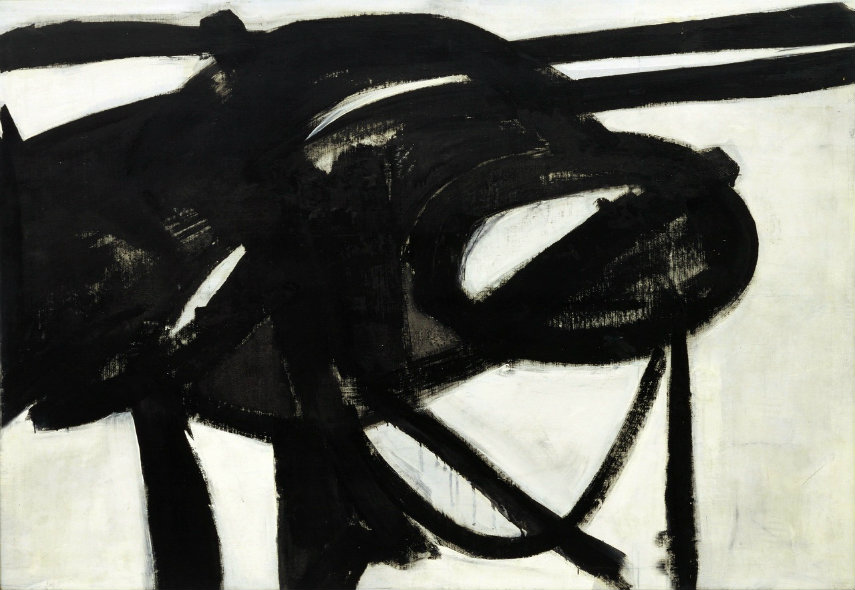
Activeness Painting
Action Paining is painting movement widespread in New York art scene from late 1940s to mid 1960s and is often seen as synonym of the abstract expressionism. The motion shifted the focus of the painting objects (finished artworks) to the very painting process and act of the creation. While Jackson Pollock insisted on concrete act of painting, approaching the concept of Breton'south automated writing, Willem de Kooning created the serial of violated figurative paintings and Franz Kline focused on esthetic of the actual brush strokes in his calligraphic brainchild.
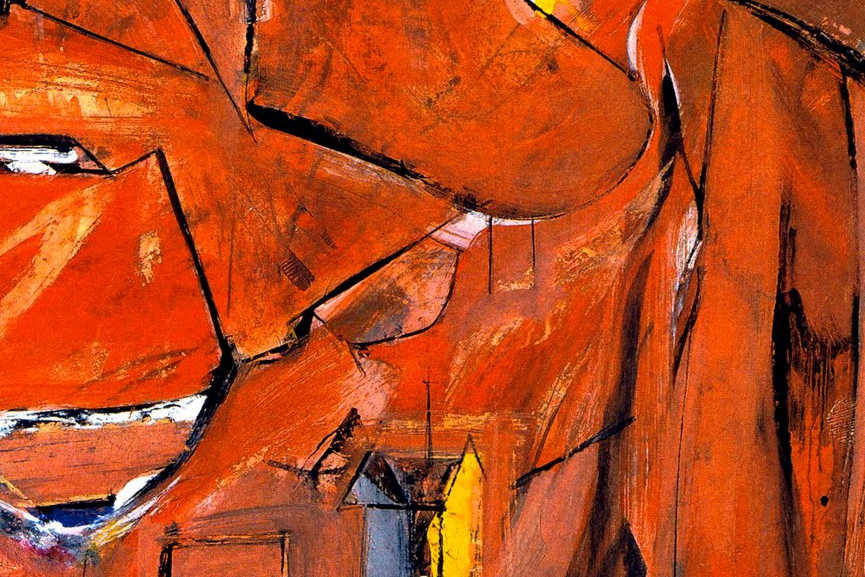
Color Field Painting
Some other style of abstract art, built-in in New York scene of 1950s was Color Field painting, which is largely influenced by European Modernism and its sublime geometric abstraction. As the name suggests, color was the main subject field of the paintings, liberated from whatever objective context or the meaning in favor of expression of the sublime human being emotions. I of the nearly pregnant authors inside the movement was Marker Rothko who even denied his connection to abstract art, insisting on mystic spirituality of his canvases, while Clifford Stills landscapes contained primordial reminiscence on nature or human being history. Robert Motherwell painted keen open fields of colors, composited with lines and shapes and Barnett Newman tried to reflect Jewish history and tradition trough the language of pure colors.
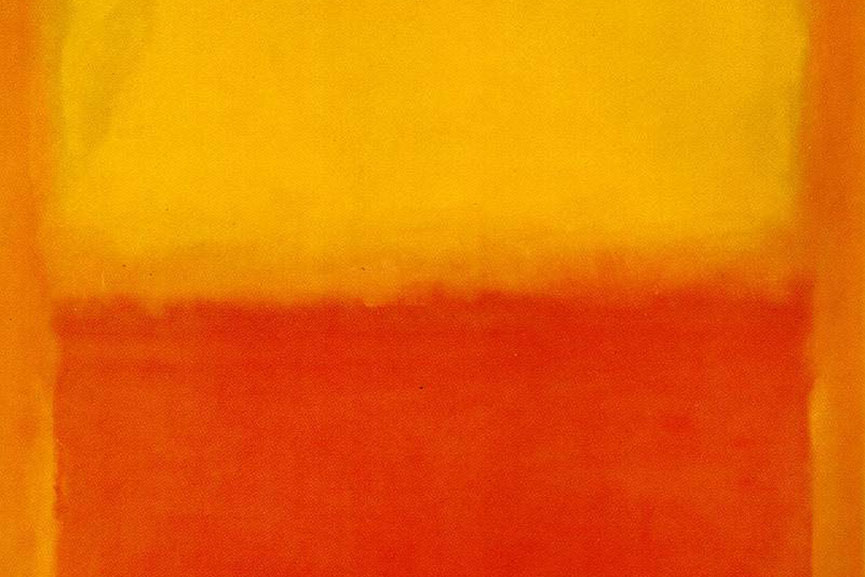
Other Significant Movements of the 50s Fine art Scene
At that place are many art movements had started in the 1950s and reached their summit in decades after. Notably, the most important movement was abstract expressionism, but it influenced the many art practices worldwide, like Modern sculpture, Pop Art, Neo-dada, Art Informel, and Lyrical Abstraction. All these styles were securely rooted in the fact that Abstract Expressionism was massively present within the 1950s art scene and art pedagogy, which was, equally nosotros said politically motivated every bit contrapunkt to the Soviet realism.
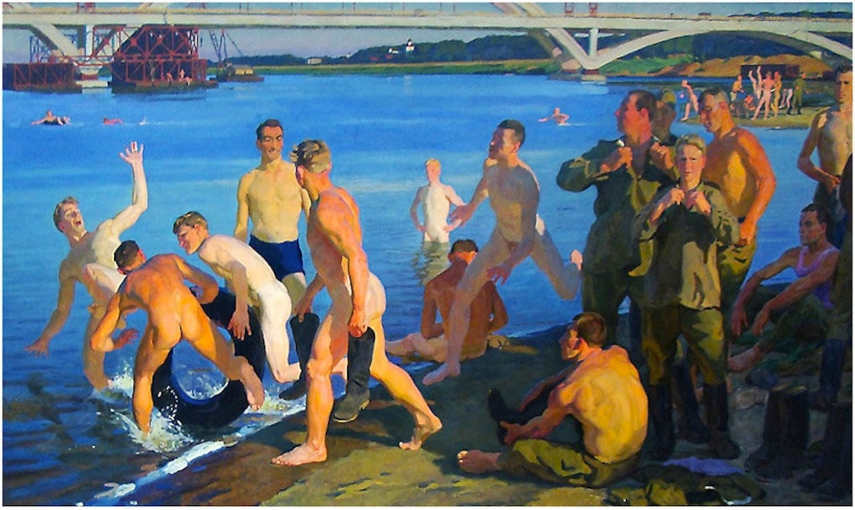
Modern Sculpture in 1950s
Sculptors in the 1950s showtime experimenting with different materials and large calibration projects which consequently led to the uprising of landscape art in 1970s. New modernist language included surrealist visions, anthropomorphic forms and impressive material combinations and extensive use of steel and gear up-made in sculpture. The new language of abstraction was embraced past John Chamberlain, Henry Moore, David Smith, Alexander Calder, Jean Tinguely, Isamu Noguchi, Louise Conservative and Louise Nevelson.

Early popular art of 1950s decade
During the 1950s in United kingdom, there was early popular art motion pb by Eduardo Paolozzi and Richard Hamilton but information technology speedily spread to american culture in piece of work of Robert Rauschenberg and Jasper Johns. Ancestry of the popular art were related to the irony shown to the fast growing society, life, infinite and pattern images inevitably changed by consumerism, equally well equally to the critique of the elitist globe of high culture and abstraction in art. Commencement phase of the pop fine art information technology is characterized with artworks from found and used objects, in the all-time tradition of prepare-fabricated, also equally the rise of cheep techniques such as collecting, collage, design or silkscreen print and other means of mechanical reproduction.
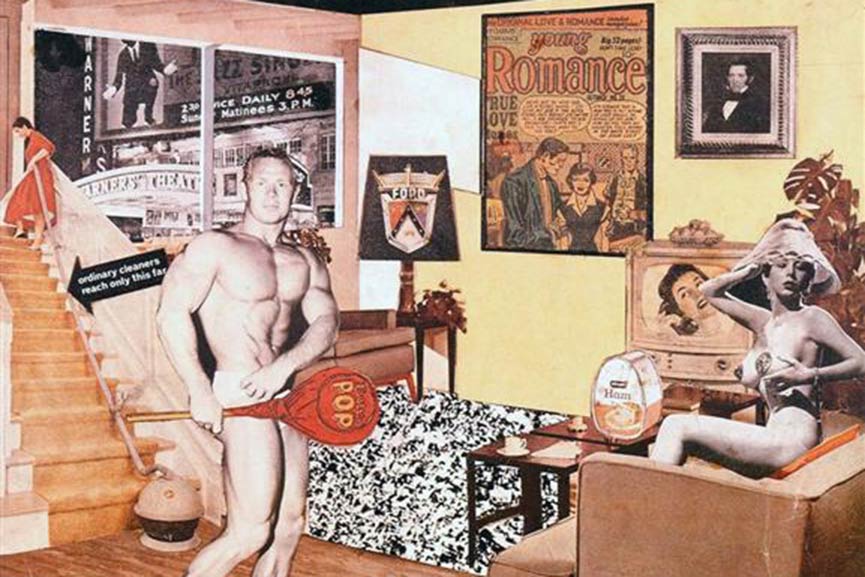
Lyrical Abstraction and Fine art Informel
While the championship of the cultural upper-case letter of the world was moved to New York, in Paris devastated by state of war devastation, the art movements were formed as a reaction to the former ascendant fine art practices – Surrealism, Cubism and Geometric Abstraction. At the same time, Abstraction Lyrique was the popular competitive practice to Abstract Expressionism in the US and the poetic answer to the globe of "cold abstraction" of Kandinsky. Tachisme (French discussion tache could exist interpreted equally stain) and Art Informel are the nigh synonyms to the Lyrical Abstraction since the stain painting, non-formal art and utilise of calligraphy were known within the Paris School 1950s explorations in painting media, which widely influenced European COBRA and Japanese Gutai group, as well equally authors in United States.

1950s Art - State of war on Abstraction
The unlike standpoints between East and Due west in 1950s widely influenced the art scene – in Eastern bloc socialist realism provoked politically engaged art or go on to develop in North korea and in Western world blossomed movements with an answer to the rise of capitalism. We might say that in 1950s i could draw a line between East and West, exclusively based on the attitude towards abstract art. This strict division in handling of abstraction was ignition spark for birth of Pop Fine art, New Figurative Fine art too equally Situationist Internationale and Conceptual Art and their neighboring practices in 1960s and 1970s, since new art movements reacted on potent governmental influence on art during fifties, equally on Due east and West.
Featured images: Jasper Johns - Three Flags, 1958 via jasper-johns.org; Jackson Pollock - Convergence, 1952, particular via wikiart; Eduardo Paolozzi - Existent Gold via wikiart, 1949;
Source: https://www.widewalls.ch/magazine/1950s-art
Postar um comentário for "Posthistorical Traditions in Art Design and Architecture in 1950s Japan"